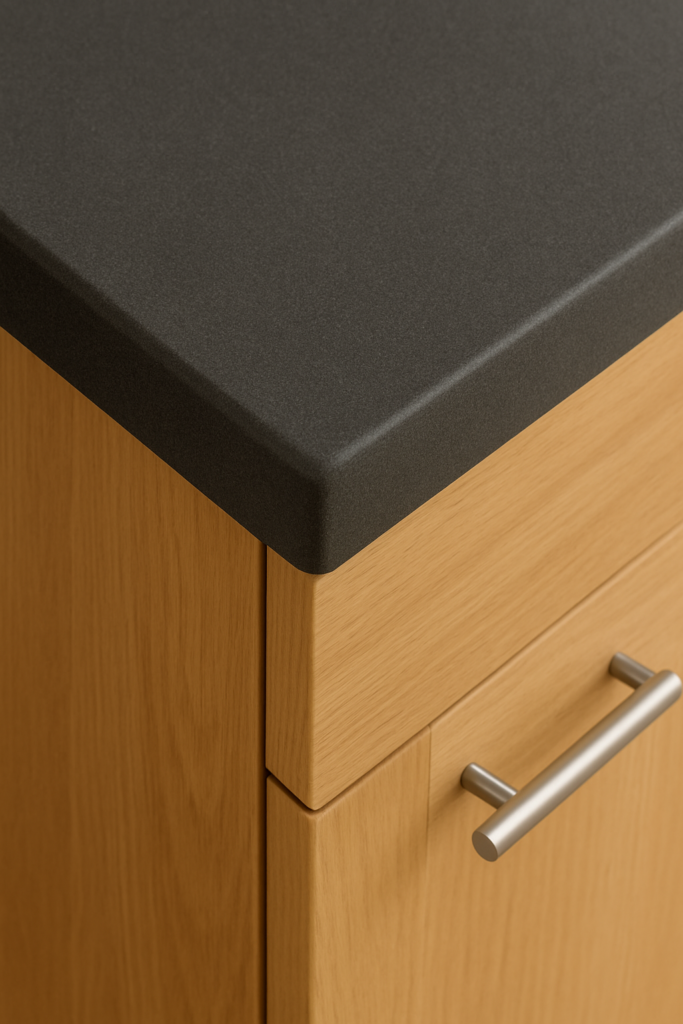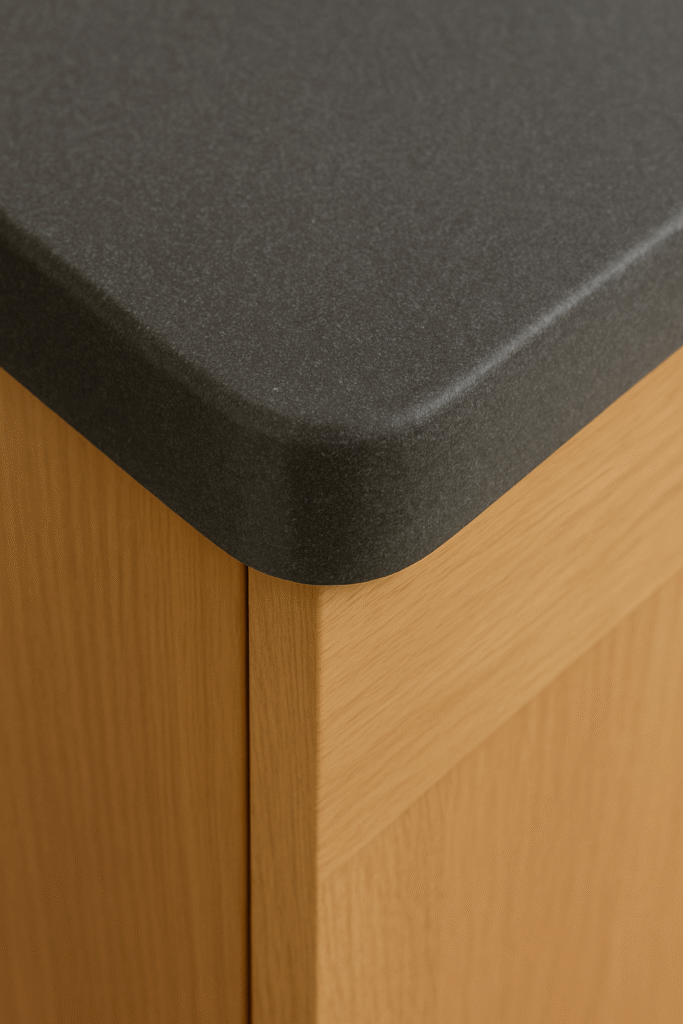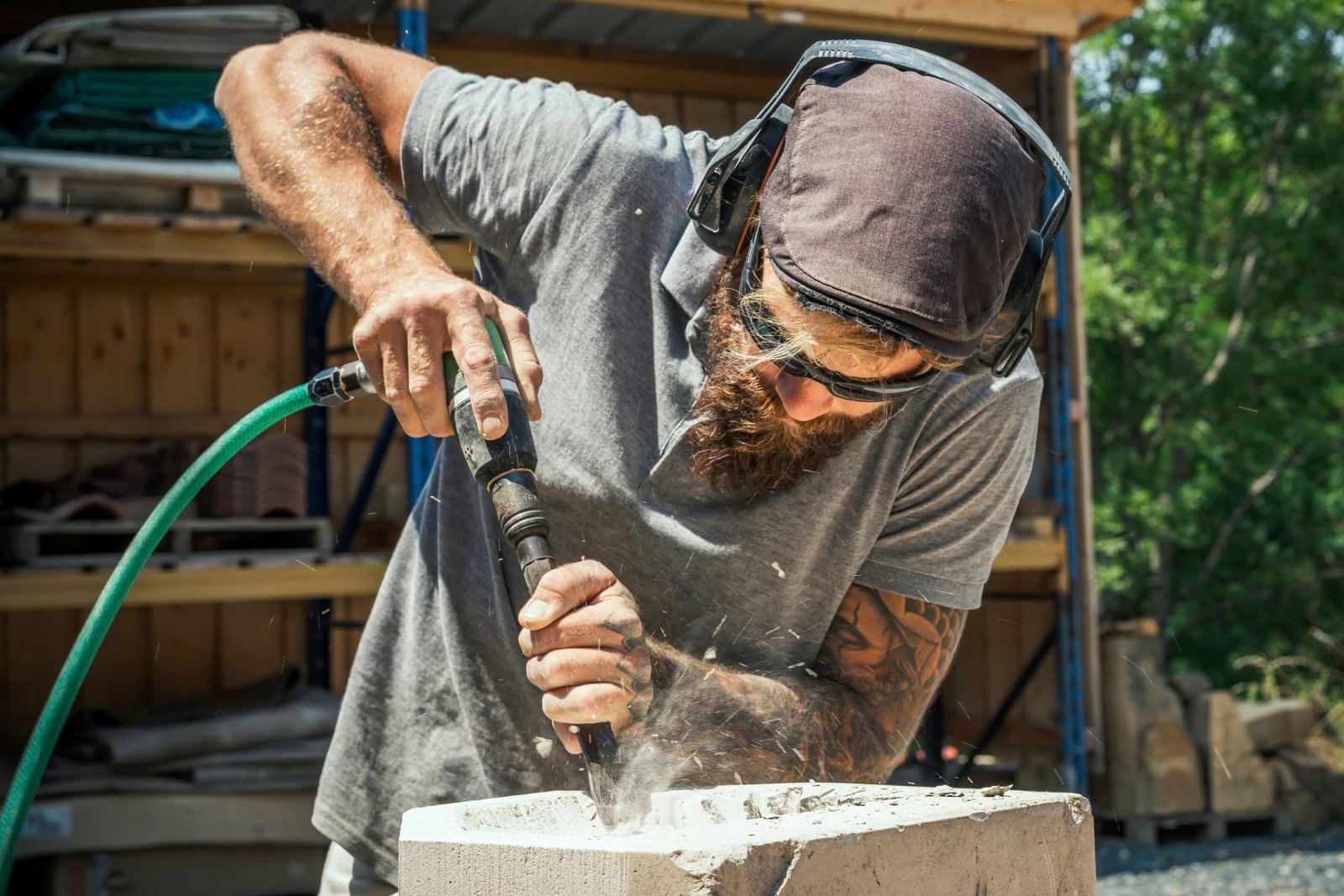
The granite countertop has long been a symbol of luxury, durability, and timeless appeal in modern kitchen and bathroom design
The granite countertop has long been a symbol of luxury, durability, and timeless appeal in modern kitchen and bathroom design. But in recent years, a new contender has entered the scene: the granite composite countertop. Combining the beauty of natural stone with the strength and consistency of man-made materials, granite composite offers a unique blend of form and function.
In this guide, we’ll explore what granite composite countertops are, how they compare to traditional granite, and whether they’re the right choice for your home. We’ll also touch on installation, maintenance, design options, and pricing, so you have all the information needed to make an informed decision.

What Is a Granite Composite Countertop?
A granite composite countertop is a manufactured surface made from a combination of natural granite stone dust and acrylic resins or polymer binders. The typical composition is 80–95% crushed granite stone blended with 5–20% resin, which is molded under high pressure and heat.
The result? A durable, non-porous, and visually appealing surface that mimics the look of natural granite but offers increased uniformity, ease of maintenance, and impact resistance.
Unlike full granite slabs, which are cut from solid rock and polished, granite composite is engineered for consistency, strength, and design versatility.
To understand how traditional granite is sourced and shaped, visit:
👉 How Are Granite Countertops Made?

Key Differences: Granite vs. Granite Composite
| Feature | Natural Granite | Granite Composite |
|---|---|---|
| Composition | 100% natural stone | Crushed granite + resin |
| Appearance | Unique patterns & veining | Uniform color and texture |
| Porosity | Porous (requires sealing) | Non-porous (no sealing needed) |
| Durability | Very durable but chip-prone | Highly resistant to scratches and impacts |
| Maintenance | Needs sealing and special cleaning | Low-maintenance, easy to clean |
| UV Resistance | Excellent for outdoor use | Not ideal for direct sunlight |
| Price Range | $$–$$$$ (varies by rarity) | $$–$$$ (more budget-friendly) |
For a detailed look at traditional granite, see:
👉 What Is a Granite Countertop?
👉 What Is Granite Countertop Made Of?
Benefits of Granite Composite Countertops
1. Consistency in Appearance
Unlike natural granite slabs, which vary in color and veining, granite composite countertops offer a more uniform aesthetic. This is ideal for homeowners who prefer a consistent look across large kitchen islands or multiple surfaces.
2. Stain & Heat Resistance
The resin-infused structure of granite composite makes it highly resistant to:
- Stains from red wine, coffee, and oil
- Heat from pans and hot cookware
- Scratches and chipping
This makes it a reliable option for kitchen countertops that experience heavy daily use.
3. Non-Porous Surface
Because it’s non-porous, granite composite does not require annual sealing. It resists bacteria, moisture, and mold buildup—making it a hygienic solution for food prep areas.
4. Easy Maintenance
Granite composite is exceptionally easy to clean. A simple wipe with warm water and mild soap is typically all that’s required. There’s no need for harsh chemicals or specialized granite countertop cleaning products.
Drawbacks of Granite Composite Countertops
1. Limited Natural Variation
While many people love the uniform appearance of granite composite, others prefer the unique veining and one-of-a-kind aesthetic of natural stone.
👉 What Does a Granite Countertop Look Like?
2. Susceptibility to UV Damage
Granite composite is not recommended for outdoor use or areas exposed to direct sunlight, as UV rays can cause fading or discoloration over time.
3. Temperature Sensitivity
Although heat-resistant, extreme or sudden temperature changes can sometimes cause stress on the resin component, potentially leading to cracking.
Popular Granite Composite Colors and Styles
Granite composite is available in a variety of finishes and tones to match your granite countertop design vision.
Common Color Options:
- Charcoal or Matte Black – Bold and modern
- Ash Gray or Graphite – Clean, industrial tones
- White or Ivory – Bright, contemporary finish
- Beige or Sandstone – Soft and neutral
Surface Finishes:
- Matte – Non-reflective and modern
- Textured – Adds tactile feel, great for grip
- Satin – A smooth, semi-gloss finish with elegance
These finishes pair beautifully with both natural and engineered cabinets, tiles, and hardware finishes.
Granite Composite Sink Integration
One of the most common applications for granite composite material is integrated kitchen and bar sinks. A granite composite sink offers the same benefits of a composite countertop:
- Resistant to scratching and chipping
- Non-porous and hygienic
- Easy to match with your countertop material
Granite Composite Countertop Installation
Countertop installation for granite composite is typically faster and less complex than natural granite.
Key Installation Considerations:
- Lightweight compared to stone slabs
- Less reinforcement needed for cabinetry
- Customization with built-in backsplashes, sink lips, and faucet holes
- Standard edge profiles: beveled, rounded, square
Pro installers can often fabricate and install granite composite surfaces within days, depending on the project scale.
How Much Do Granite Composite Countertops Cost?
Granite composite countertops generally fall within a mid-range price point.
Average Price Range:
- $50 to $100 per square foot installed
Factors that influence granite countertop prices:
- Brand and country of origin
- Color and finish
- Thickness (most are 1.25″ or 3 cm)
- Custom features (edges, cutouts, sink integration)
While not the cheapest option, granite composite provides great long-term value, especially when compared to high-end quartz or natural granite.
Granite Composite Maintenance Tips
- Clean daily with warm water and mild soap
- Avoid harsh chemicals like bleach or abrasive pads
- Dry surface after use to prevent water spots
- Do not place hot pans directly on the surface—use trivets
- Avoid cutting directly on the surface—use a cutting board
Is Granite Composite Right for You?
Choose granite composite if you want:
- A modern, uniform aesthetic
- Low-maintenance care
- Resistance to stains, heat, and scratches
- A durable yet affordable stone alternative
Stick with natural granite if you want:
- Unique natural veining and one-of-a-kind beauty
- Outdoor or high-UV exposure applications
- Long-term resale value from natural materials
Final Thoughts
Granite composite countertops offer a sleek, reliable, and low-maintenance alternative to traditional stone. Perfect for busy kitchens and modern designs, they bring together the beauty of granite slab with the practicality of engineered performance.
Whether you’re planning a full kitchen renovation or a bathroom refresh, granite composite may be the ideal material to balance aesthetics, durability, and cost.

